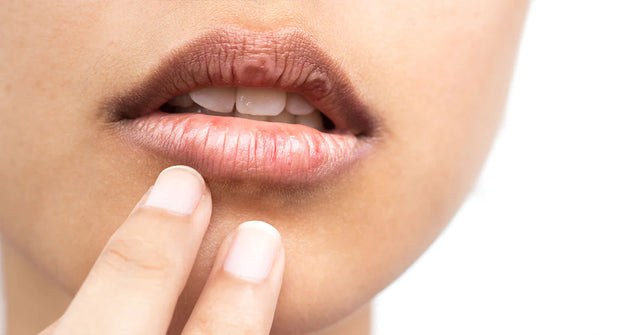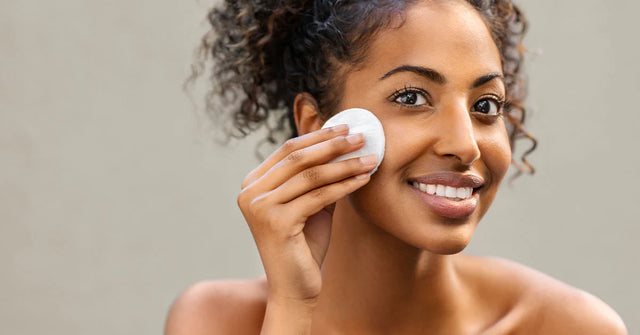Having oily skin can be a challenge, but everything has a solution! If you want to know how to build a skincare routine for oily skin, you’re in the right place - so read on!
As with any skin type, choosing the right products is key when treating oily skin. Some products or treatments can make your skin worse or create a rebound effect, meaning that improvements can be seen almost immediately, but after a few days, the skin will return to its original state.
You don't want that, do you?
But, before we talk about how to build a skincare routine for oily skin, let's understand the root cause of it.
What causes oily skin?
Oily skin, or seborrhea, is a type of skin characterized by excessive sebum production, especially in the T-zone of the face, that is, on the forehead, nose, and chin. This overproduction of oil by the sebaceous glands can often lead to pimples, acne, and enlarged pores, which is why it is important to follow an effective skincare routine.
There are various reasons why you have oily skin and identifying which ones contribute to the increased sebum production in your skin will help determine how you should care for it. Among them are:
- Hormonal changes: your hormones can influence the skin and stimulate excess sebum production.
- Diet: when you consume too many processed carbohydrates, fats, sugar, and dairy products, the oiliness on your skin will increase.
- Excessive cleansing: this can be counterproductive since your skin will try to replenish the natural sebum that has been lost.
- Cosmetics: using oil-based makeup clogs pores and can cause acne, while also increasing sebum production.
- Genetics: If there is a history of oily skin in your family, it’s more likely that you will experience it too.
- Medication: Some medications are responsible for dehydration, causing your skin to compensate by producing more oil.
How to build your oily skincare routine
In this section, we'll talk about the importance of a good skincare routine for oily skin and how to build a facial routine for oily skin.
Keep in mind that it’s important to be consistent in your routine and use products that are specifically formulated for your skin type.
Step #1 - Cleanse
Cleansing is the first step in any good skincare routine. It helps to remove all impurities, sweat, and environmental pollution that can harm your skin.
There are many different types of cleansers available including gels, bar soaps, and foaming facial washes. Some individuals like to use micellar water, but if you do, it is crucial to rinse well afterward so that no traces remain on the skin.
An ideal cleanser should work effectively without over-drying and contain ingredients like lactic and salicylic acid. Our clarifying cleanser gently exfoliates to remove dead skin cells and pore-clogging oil. It is formulated with powerful active ingredients like lactic acid, salicylic acid, and glycolic acid, which cleanse the skin thoroughly without irritating or over-drying.
Step #2 - Apply Toner
Toner is a step many people skip in their facial routine, but it is vital if you have oily skin. The toner helps to balance the skin's pH level and achieve a deeper clean. It also hydrates the skin and helps the products you apply afterward absorb better.
To help reduce excess grease while visibly minimizing pores and preventing blackheads and blemishes, choose our Maxatone Clarifying Toner. It is the ideal product to complete your daily skin cleansing thanks to its unique combination of witch hazel, licorice, lemon peel, and comfrey leaf extracts that soothe and soften the skin, deeply cleanse and unclog pores.
Step #3 - Use Serum
A good facial serum should be included in all skincare routines as it can enhance the effects of your moisturizer. Individuals with oily skin should look for a lightweight formula that won’t leave a greasy residue, opting for ingredients such as hyaluronic acid, plus beneficial vitamins and antioxidants.
With its two weights of hyaluronic acid molecules, our Intensive Hydration Serum improves your skin's appearance by creating a plumper, fuller effect that minimizes lines and wrinkles.
Step #4 - Moisturize
Moisturizing is important for all skin types and while you may think that it will increase the skin's oil level, in reality, it helps maintain sebum balance and regulate its production. However, if you have oily skin you must use products made for your skin type, avoiding those that are too heavy or greasy. If you have more of a combination skin type, where the excess oil is mainly in your T-zone, use a lighter moisturizer in those areas, and a richer product where the skin is dry, which is usually on the cheeks.
Regardless of skin type, the moisturizer you choose should restore optimal levels of hydration, nourish and brighten the skin, and reduce signs of aging, if this is a concern. Our light gel-cream daily moisturizer instantly refreshes and revitalizes your skin in addition to providing powerful antioxidant protection against free radical damage.
Step #5 - Use Sunscreen
It is essential to use sunscreen every day. It will protect your skin from the harmful rays of the sun which can contribute to premature aging. Ideally, an effective sunscreen should contain ingredients such as glycerin and zinc oxide to prevent dryness while offering UV protection.
For oily skin types, a lightweight formula like our Hydrating SPF Daily Moisturizer with SPF30 is the perfect addition to your skincare routine as it absorbs quickly without leaving a greasy residue.
Step #6 - Use Eye Cream
Even individuals with oily skin usually find that they need to show the eye area a little extra TLC. An eye cream that incorporates hyaluronic acid, plant-based extracts, and vitamin K will help minimize fine lines and wrinkles under and around the eye area, reduce puffiness, and fade dark under eye circles.
Our clinically proven Age-Defying Eye Cream is suitable for all skin types, lifting, firming, and brightening the entire eye area for a youthful, rejuvenated appearance.
Bonus Step - Treat Your Skin With A Facial Mask
Using a facial mask formulated for oily skin is something you can add to your routine once or twice a week and can help individuals who are dealing with blemishes and acne breakouts. These types of treatments work to remove dirt and dead cells from the skin, unclogging the pores and allowing other skincare products to penetrate more effectively. They can also accelerate the skin cell renewal cycle and reduce impurities that can cause pimples, comedones, or blackheads to accumulate. For oily skin, we recommend using a mask that is lightly moisturizing and allows the skin to breathe properly.
FAQs
What's the budget skincare routine for oily skin?
Finding a budget-friendly skincare routine that works well when you have oily skin may seem unattainable, but it can be done. If you know what ingredients to look for, you can find well-priced products that, when used consistently, will give you the results you want for your skin. Your routine doesn’t need to include multiple unnecessary treatments - just make sure all the steps outlined above are covered and you will see improvements in your skin.
Conclusion
Oily skin is very common, but it won’t be a problem if you care for it properly using products that are formulated for your particular skin type. Don’t forget that lifestyle also plays a role in ensuring your skin looks its best so eat a healthy diet, drink plenty of water, exercise regularly, and make sure you get enough quality sleep. Whatever type of skin you have, you deserve to look beautiful and healthy, and our best-selling products for oily skin will help you achieve that!
Mentioned in this article
More stories

10 Causes of Dry Skin Around Your Mouth




